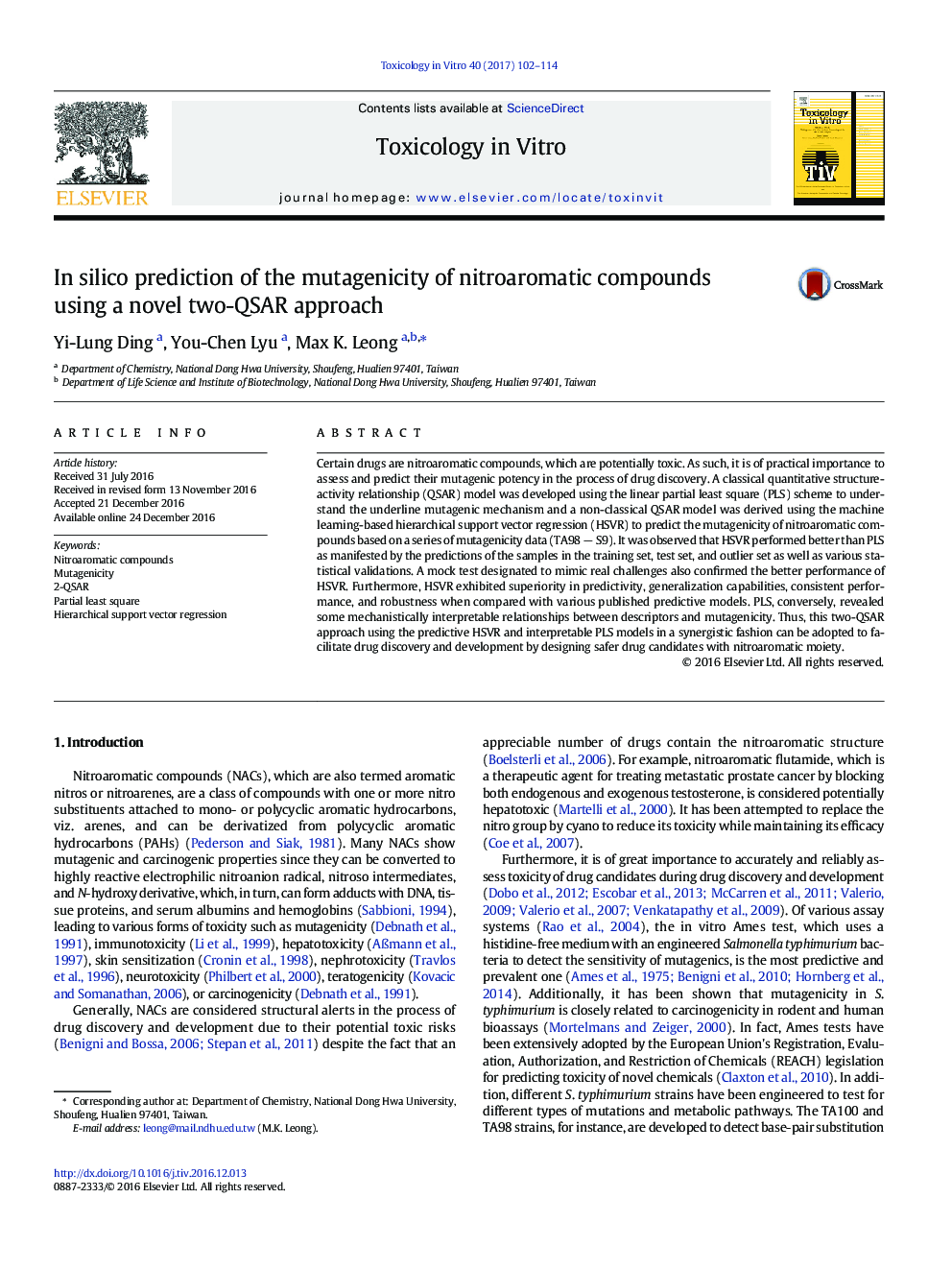| Article ID | Journal | Published Year | Pages | File Type |
|---|---|---|---|---|
| 5562723 | Toxicology in Vitro | 2017 | 13 Pages |
â¢Nitroaromatic compounds are potentially toxic.â¢The selected descriptors can comprehensively render the complicated mutagenicity.â¢PLS model provides interpretability.â¢HSVR model provides predictivity.â¢Two-QSAR approach can be used to facilitate drug discovery and development.
Certain drugs are nitroaromatic compounds, which are potentially toxic. As such, it is of practical importance to assess and predict their mutagenic potency in the process of drug discovery. A classical quantitative structure-activity relationship (QSAR) model was developed using the linear partial least square (PLS) scheme to understand the underline mutagenic mechanism and a non-classical QSAR model was derived using the machine learning-based hierarchical support vector regression (HSVR) to predict the mutagenicity of nitroaromatic compounds based on a series of mutagenicity data (TA98 â S9). It was observed that HSVR performed better than PLS as manifested by the predictions of the samples in the training set, test set, and outlier set as well as various statistical validations. A mock test designated to mimic real challenges also confirmed the better performance of HSVR. Furthermore, HSVR exhibited superiority in predictivity, generalization capabilities, consistent performance, and robustness when compared with various published predictive models. PLS, conversely, revealed some mechanistically interpretable relationships between descriptors and mutagenicity. Thus, this two-QSAR approach using the predictive HSVR and interpretable PLS models in a synergistic fashion can be adopted to facilitate drug discovery and development by designing safer drug candidates with nitroaromatic moiety.
